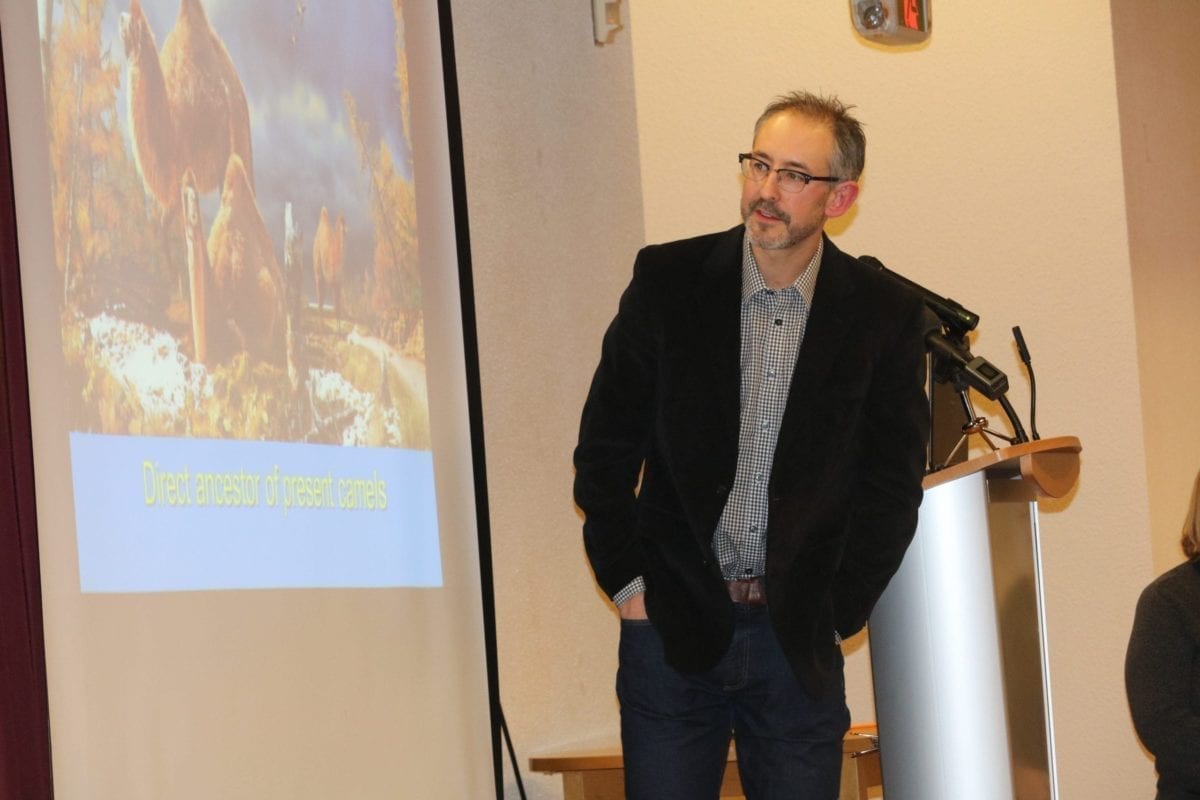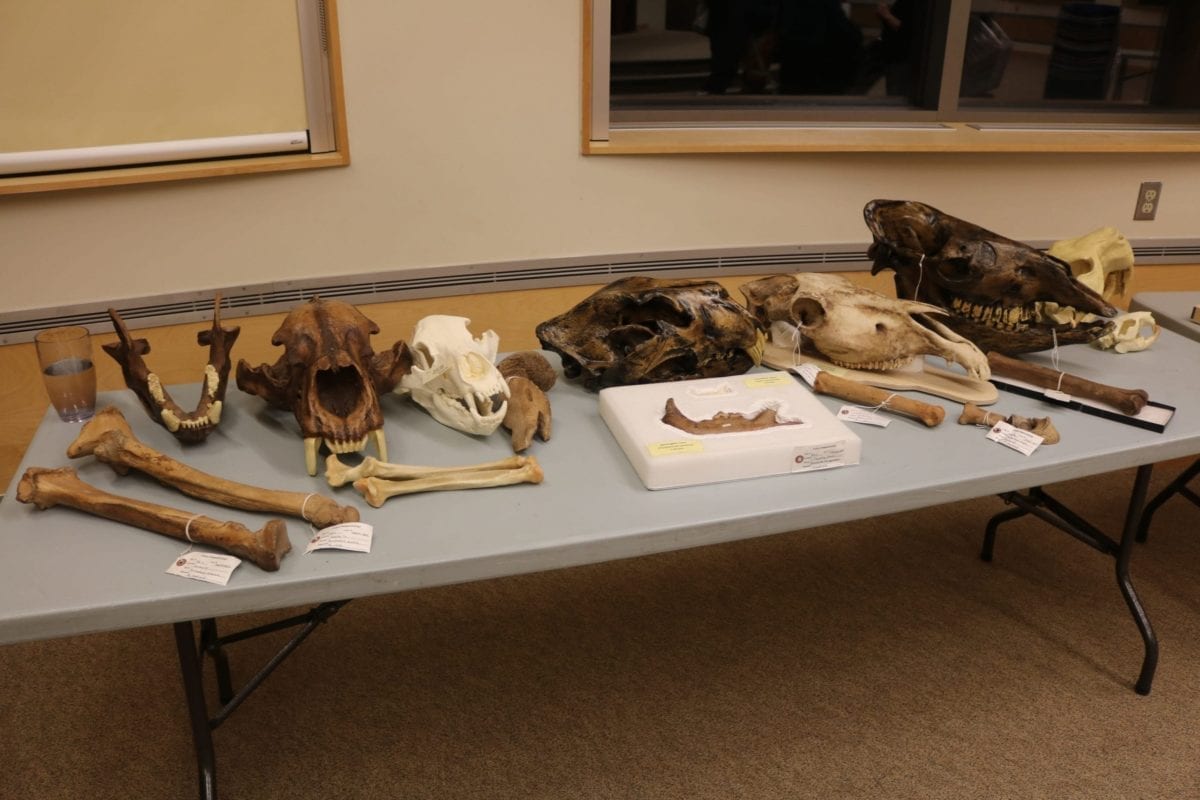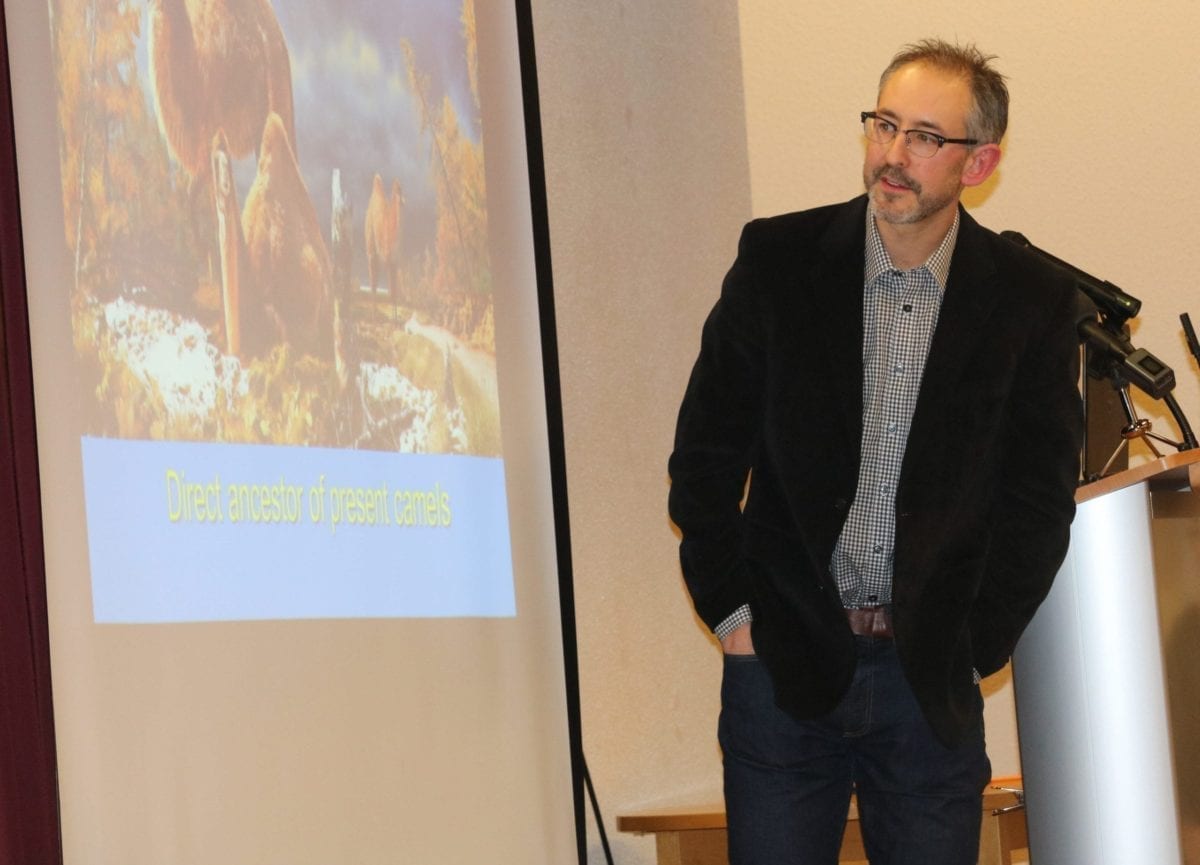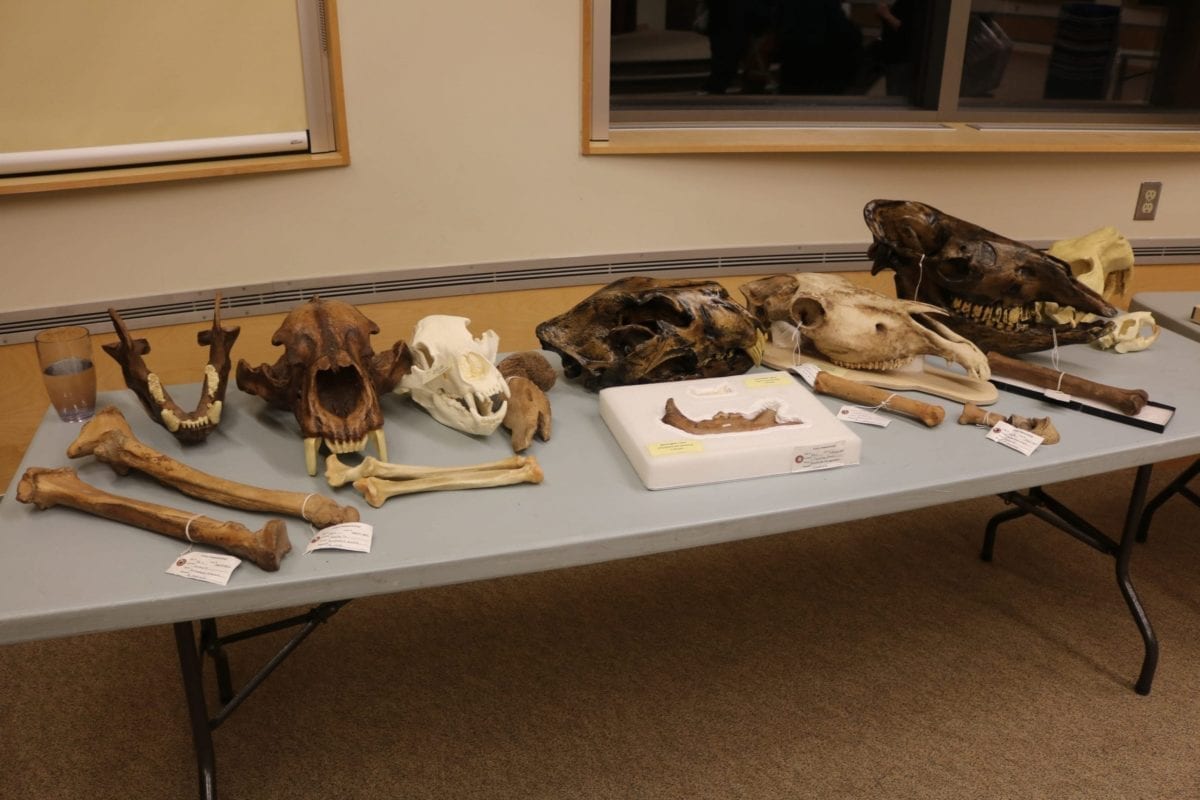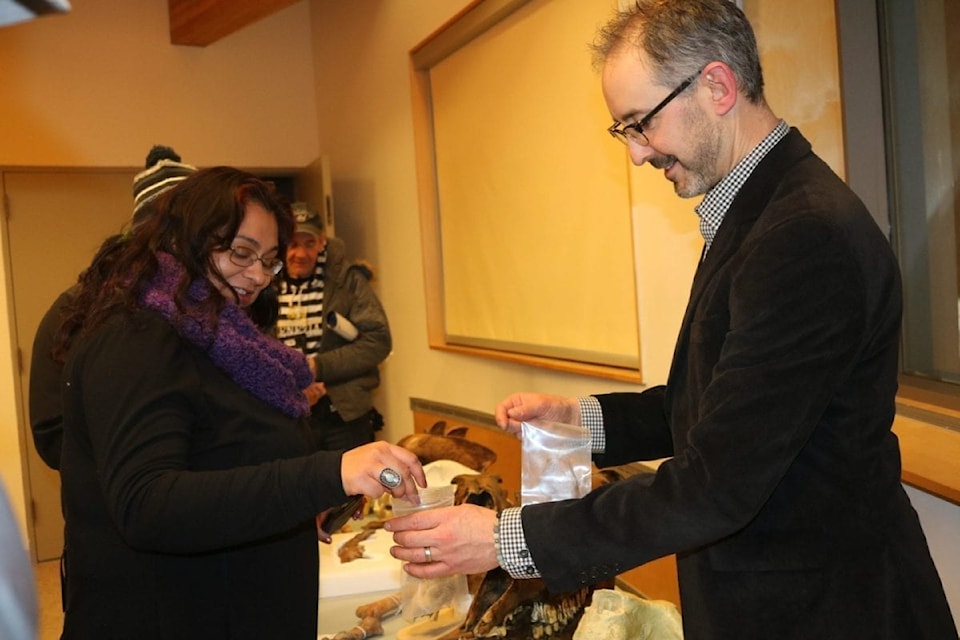Guests at the Geoscience Forum’s keynote address in Yellowknife got a glimpse into the deep past Wednesday night as Yukon paleontologist Dr. Grant Zazula talked about the history of Yukon's Ice Age animal settlement.
About 75 people attended the Charles Camsell Public Lecture at the Prince of Wales Northern Heritage Centre, which is annually hosted by the Northwest Territories and Nunavut Association of Professional Engineers and the Geologists (NAPEG).
Zazula's talk focused much on what is known about the Beringia region -a former continental landscape that intermittently stretched across northeastern Russia to the Mackenzie River during the late Pleistocene period from around 125,0000 to 11,000 years ago- and in particular the extent of knowledge that exists about Ice Age-era animals in present-day Yukon.

Simon Whitehouse/NNSL photo
Zazula explained that fossil records that have been collected over the last century and a half challenge myths about what animals lived together during the Ice Age and have presented new questions about how they survived in these extreme environments and why they became extinct.
Efforts by scientific institutions to recover Ice Age fossils developed in the late 19th Century and coincided with Yukon's early social history and the Klondike Gold Rush, he said.
Since 1996 and the establishment of the Yukon Government Paleontology Program, Zazula said the territory has been able to build a positive network of relationships with gold miners and First Nations people to allow for the discovery and preservation of fossils at home.
"We have a lot of (territorial) regulations and laws that protect fossils but we work and develop relations with them because regardless if there are laws or not, if they want, they can bury all the stuff and run it over with a Cat," Zazula said of his on-the-land partners.
"Because we have good relations when they find cool things they let us know right away. "
Zazula said among his more memorable discoveries were mummified remains of a steppe bison - a common fossil found in Yukon - found in Tsiigehtchic in 2007.
"These bones are about 13,000 years old and some of the only mummified soft tissue of Ice Age animals ever found in the Northwest Territories," he said, noting there was also a part of a leg bone muscle with skin, a big chunk of fur and what was initially thought to be an intestine.
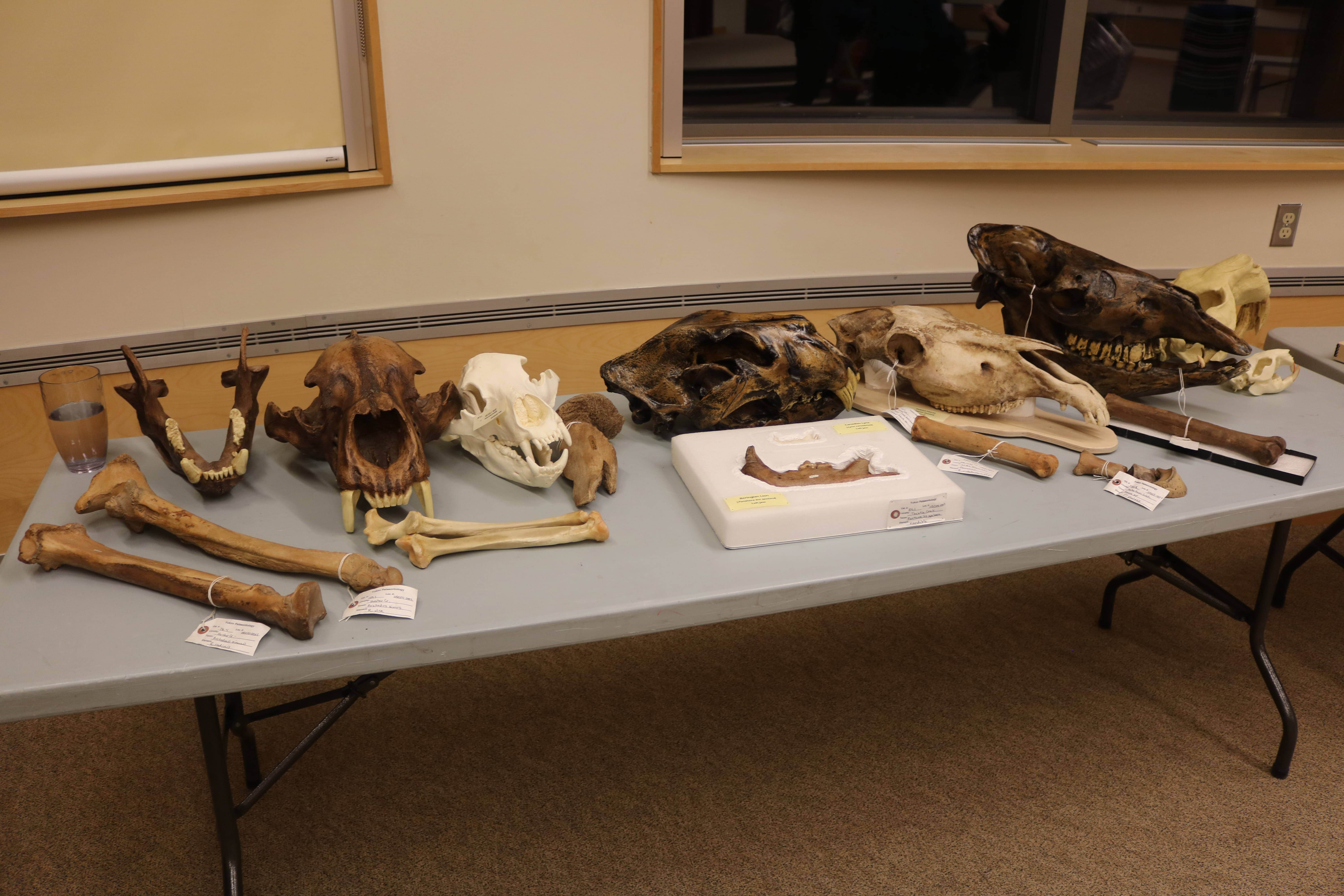
Simon Whitehouse/NNSL photo
Zazula recalled that his team sent the mysterious piece to a veterinarian at the University of Calgary only to find out it wasn't an intestine.
"They told us it was not an intestine, but the first discovery of an ancient Steppe Bison penis in the world," Zazula said to a roomful of laughter. "So I had a bison penis in my hand and didn’t even know it.
"I’m not sure if I wanted to be known as the author of a bison penis article."
Among other Ice Age animals Zazula discussed were tiny horses, scimitar cats, and woolly mammoths. He also joked about six-foot giant beavers, which he said were comparable in size to Canadian pop-singer Justin Bieber.
"We have a jawbone found on the Porcupine River and compared to the modern beaver, these were huge beavers that stood about five to six feet tall," Zazula said, noting their incisors were about eight inches long. "Justin Bieber was just about as big as a giant beaver."
The High Arctic camel or the paracamelus, first found in the early 20th century on the Old Crow River, still remain a mysterious animal. It has also been found on Ellesmere Island in recent years, he said.
"We know that these ancestors of living camels evolved in the Arctic and a lot of these adaptations that we thought were meant for the desert - are things like large humps and big wide feet," he said, noting that the former is good in cold temperatures for storing fat, while the latter is helpful for walking on snow.

Simon Whitehouse/NNSL photo
Karen Costello, president of NAPEG, and Linda Golding, executive director, said the organization has been able to put together a speaker and subject to highlight the forum since at least the late 1990s.
"Grant was a phenomenal speaker and gave incredible information about the evolution of life in the Yukon," Costello said. "For me, just making that connection of what has been found and what the history is - Grant did a wonderful job of explaining those stories. NAPEG is happy to provide the opportunity."
